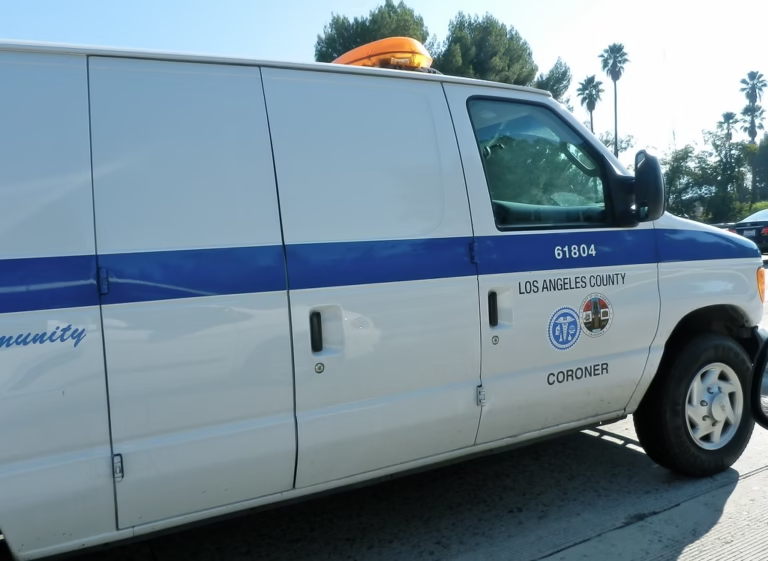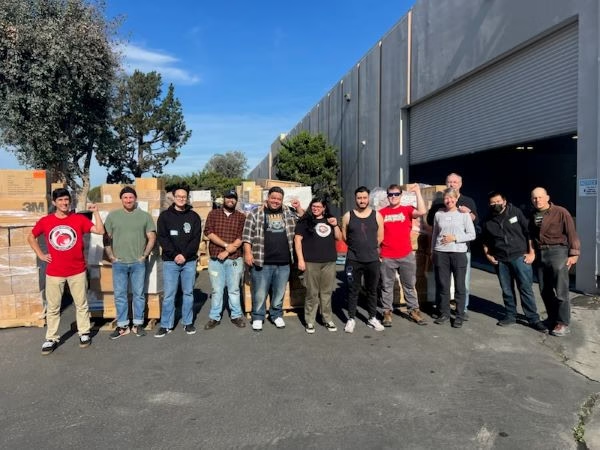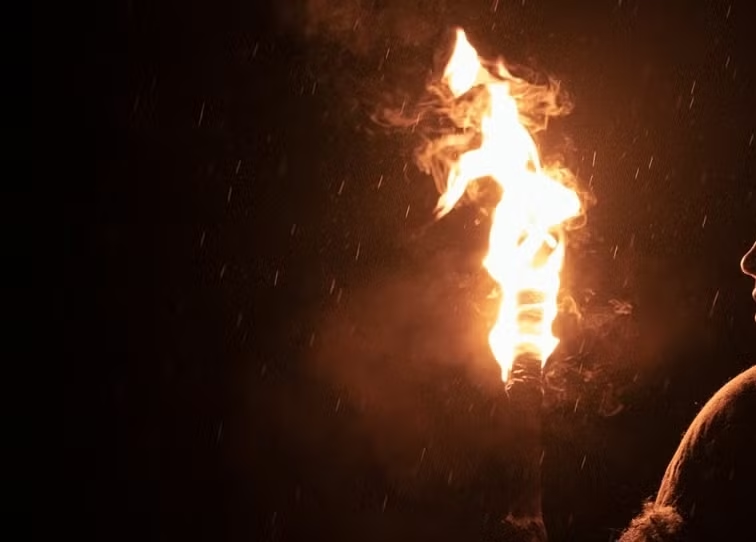LOS ANGELES — The Los Angeles County Board of Supervisors Jan. 7 approved a motion authored to direct the Department of Public Health or DPH’s office of violence prevention to create an awareness campaign and appropriate tools on domestic violence prevention.
Domestic violence, particularly that between partners, remains a critical issue in Los Angeles County and statewide. According to the 2023 report on the status of women in Los Angeles County, in 2020, Los Angeles County accounted for 22% of all domestic violence calls across the State. The 2023 Los Angeles County health survey indicated that domestic violence impacts women across races, ethnicities, and income levels, and approximately 1 in 4 women report having endured sexual or physical violence from an intimate partner. An estimated 5.7% of males report physical domestic violence in the county, and 10% of men indicated having experienced sexual or physical violence from an intimate partner during their adult lives.
Through the office of violence prevention, the Domestic Violence Council and the office of women’s health, the county’s Department of Public Health has prioritized addressing issues related to domestic or intimate partner violence, and gender-based violence, in addition to a dedicated 24/7 domestic violence hotline to connect individuals in need of support to an operator or agency near them. The county continues to identify opportunities to raise awareness and provide additional supports to individuals experiencing domestic and intimate partner violence, loved ones of those experiencing abuse, and provide services for abusers, to continue to prevent and address instances of violence.
The motion directs DPH’s office of violence prevention to work with the Department of Mental Health and the Los Angeles County Office of Education or LACOE, to create a toolkit on raising domestic violence and expand on existing resources. Further, the motion requests the Los Angeles Sheriff’s Department or LASD to report back with a feasibility study on options to better partner and develop a coordinated response to the needs of people experiencing domestic or intimate partner violence, their families, and abusers.
Details: Read the motion in full here.
Supervisors Approve Motion to Raise Domestic Violence Awareness and Prevention
Supervisors Approve Motion to Terminate Transportation, Storage Fees for Residents to Transport the Deceased
LOS ANGELES — The Los Angeles County Board of Supervisors Jan. 7 approved a motion authored to identify ongoing funding to permanently eliminate transportation and storage fees for all county residents.
The loss of a loved one can be one of the most difficult and traumatic moments in peoples’ lives, and unfortunately can also be financially stressful for those laying their loved ones to rest. Previously, the Los Angeles County Department of Medical Examiner or DME required a transportation and storage fee of $400 to transport the body of the deceased from the place of death to the DME where bodies undergo an examination. This fee was often one of the many unexpected and costly expenses incurred from the loss of a loved one.
In March 2024, the board approved a motion authored by chair pro tem Solis to instruct the chief medical examiner to identify and provide funding to waive transportation and storage fees for county residents during a 180-day assessment period. This assessment period confirmed the burden of transportation disproportionately impacts low-income communities, which includes people of color. Funding was also successfully identified for the duration of the pilot program to the end of the current fiscal year.
“I am grateful we have the flexibility in our budget to eliminate this fee that had burdened families during some of the most difficult days of their lives. Los Angeles County is here for our residents from their births to their deaths. This is part of that commitment and taking care of our residents with dignity and compassion,” said Supervisor Hahn.
The approved motion will direct the chief executive office, in collaboration with the Department of Medical Examiner, to identify ongoing funding to permanently eliminate transportation and storage fees for all county residents.
Details: Read the full motion here.
LA County Approves Day of Mourning for Jimmy Carter
Today, the Los Angeles County Board of Supervisors Jan. 7 voted to declare Jan. 9, as a Day of Mourning in honor of former President Jimmy Carter.
Aligning with President Biden’s proclamation of a National Day of Mourning, Los Angeles County will pause to reflect on President Carter’s enduring contributions.
The closure of non-emergency county offices on Jan. 9 will allow employees and residents to honor his memory and legacy while ensuring essential services remain uninterrupted to meet the needs of our communities.
“President Jimmy Carter led our country compassionately and with a kindness that championed human rights and made significant strides in environmental justice and education. His values reflected the very best of humanity,” said Chair Pro Tem Hilda L. Solis. “We dedicate Thursday, January 9, 2025 as a Day of Mourning in his honor. May we reflect on his long and fulfilling lifetime and tremendous career in public service with admiration and pride, and as a resounding collective commitment to uplift peace and prosperity for our country.”
President Carter’s National Funeral Service will take place on Jan. 9 in Washington D.C. at 10 a.m. Eastern Standard Time.
California Unveils Bold Plan for Zero-Emission, Fully Connected Rail Network by 2050
SACRAMENTO — Gov. Gavin Newsom Jan. 7 announced the release of the State Rail Plan, a long-range vision of statewide investments that will create up to 900,000 jobs and a zero-emission, fully interconnected rail and transit network by 2050.
The plan calls for providing mobility to every region of the state by creating a world-class, fully integrated, zero-emission rail network that connects seamlessly with other transportation modes. The network includes intercity, regional, and local transit systems to make traveling by train a more attractive option compared to car or air travel — giving Californians options when it comes to traveling around the state.
The State Rail Plan is a key part of the Governor’s build more, faster agenda delivering infrastructure upgrades and creating thousands of jobs across the state. Find projects building your community at build.ca.gov.
This vision will also benefit communities historically underserved by transportation infrastructure by increasing access to affordable and frequent rail services. The state envisions passenger rail and transit, which combined currently serve only 2% of miles traveled in California, to increase to 20% of all miles traveled by 2050 on a zero-emission fleet. This would shift nearly 200 million daily passenger miles from highways to the statewide rail and transit network, significantly reducing road congestion and carbon pollution.
This plan will ensure goods movement needs are met while pursuing opportunities to shift freight to rail. The effort to build this zero-emission train network throughout California has already begun.
Electrified high-speed rail systems currently under construction will form the backbone of the state’s passenger rail network, which will anchor longer distance trips. The plan identifies priority projects to complete high-speed systems and connect them with intercity and regional rail to expand the reach and impact of the investments.
“This plan builds off California’s commitment to progressing inter-city passenger rail service and advancing mobility, economic and environmental benefits,” said California High-Speed Rail Authority CEO Ian Choudri. “As a foundational part of the state’s integrated rail network, California’s clean, electrified high-speed rail project will connect the Bay Area to Los Angeles through the Central Valley, extending to local and regional networks throughout the state.”
In June 2024, the first self-powered, zero emission passenger train in North America arrived in San Bernardino County and is scheduled to enter service later this year. In August, Caltrain launched California’s first electric rail system on the San Francisco Peninsula, and full electric service along the San Francisco-San Jose corridor began in September.
The plan also aligns with the Climate Action Plan for Transportation Infrastructure (CAPTI), and the California Transportation Plan 2050 (PDF). Along with reducing greenhouse gas emissions, the Rail Plan outlines measures to protect rail infrastructure from climate risks such as sea-level rise, wildfires and flooding to ensure long-term resilience.
The plan envisions a direct capital investment of $310 billion from local, state, federal, and private funding, with an estimated economic return of over $540 billion by 2050. This investment is also expected to create 900,000 full time jobs for construction, maintenance, and operation industries, representing a significant boost to California’s economy. A fully integrated statewide rail network will also improve access to opportunity for Californians without the costs of car-ownership.
Gov. Newsom Targets Ultra-Processed Foods and Food Dyes with New Executive Order
SACRAMENTO – Gov. Gavin Newsom issued an Executive Order Jan 3 to continue investigating the adverse health effects of synthetic food dyes and increase access to affordable, healthy foods. “Ultra-processed foods” are known to pose a health risk to individuals, and these efforts are designed to support affordable, healthy living and reduce the growing impact of chronic illnesses on Californians.
This Executive Order orders specific state entities to:
Provide recommendations to the governor’s office regarding potential action to limit the harms associated with “ultra-processed foods” and food ingredients that pose a health risk to individuals.
Continue investigating the adverse health impacts of synthetic food dyes.
Recommend actions to reduce the purchase of soda, candy, other ultra-processed foods and/or foods with synthetic food dye or other additives and incentivize the purchase of healthy and fresh foods by enrollees in the CalFresh Program.
Investigate the feasibility of requiring Medi-Cal Managed Care plans and California hospitals to use their community investment dollars and community benefit funds to enhance access to fresh, healthy foods, mitigate the impacts of “food deserts,” and otherwise promote public health at the local level.
Identify areas where California may adopt higher standards for healthy school meals than national standards.
Explore developing new standards and partnerships to further protect and expand universal school food programs.
Details: Click here to read the full executive order.
Workshop Announced for Nation’s Largest Port Grants Program
Do you live near the Port of Long Beach or its trade corridors? The port wants your input on the Community Grants Program, a more than $65 million, largest-in-the-nation effort to lessen the impacts of port operations on the surrounding area.
A virtual workshop will be hosted Jan. 15, to share staff outreach efforts conducted in 2024 regarding funding priorities for 2025-27, present the findings and gather feedback from attendees.
Attendance is limited to 100. Spanish, Khmer or Tagalog translation is available upon request. A request for translation should be sent at least 72 hours in advance. To make a request, or for more information, contact grants@polb.com or 562-283-7133.
The award-winning Community Grants Program is a more than $65 million effort to support projects that help those who are most vulnerable to port-related environmental impacts. These projects are expanding asthma services, controlling stormwater runoff through the building of permeable parking lots, and creating open space buffers between port operations and communities, among others. The program is the largest voluntary port mitigation initiative in the United States. To date, $50.6 million has been committed.
Learn more about the Community Grants Program at www.polb.com/grants.
Time: 1 to -2:30 p.m., Jan. 15
Cost: Free
Details: Register at: https://tinyurl.com/Community-grants-workshop
Venue: Online
No Pain Killers at Cuba’s Main Trauma Hospital. Calixto Garcia Emergency Campaign
Give the Gift of a Pain Free Existence

The Los Angeles Hands-off Cuba Committee, working with executive leadership in Academic Medicine® or ELAM graduates in Los Angeles, local physicians, Not Just Tourists, and Global Health Partners, has launched a special one-month campaign to collect pediatric and general ER medical supplies in Southern California, truck them to New Orleans, and ship them to CUBA by GHP.
The 26-foot truck will contain at least 20 large pallets of enormous financial and humanitarian value.
The truck’s cost and fuel are $5,500 plus the shipping container transport to Cuba (covered by GHP).
The Los Angeles Hands-off Cuba Committee or LAHOC is soliciting drivers to assist in driving from Los Angeles to New Orleans or any part of that route, in mid to late January. Several stops with solidarity activities will be organized along the route as Pastors for Peace used to do.
LAHOC has just heard from GHP that the main trauma hospital in Havana, Calixto Garcia (where LAHOC and other delegations bring suitcases of medical aid), is completely out of any painkillers such as Ibuprofen, Tylenol, and aspirin. A result of the blockade and the State Sponsorship of Terrorism or SSOT. The goal is to acquire 100,000 plus painkillers.
Thus, LAHOC is launching an emergency campaign to solicit funds or donations of said products that can be shipped to Cuba either before this container ships or in the container itself.
But the situation is critical. Contact LAHOC if you are interested in being a driver or participating in this campaign for desperately needed painkillers.
You can donate or purchase and deliver to the LAHOC.
$15 will allow us to purchase 1,000 Ibuprofen, Aspirin or Tylenol tablets.
Time is of the essence.
Details: https://www.zeffy.com/fundraising/be-the-change-donate-now
Lighting the Path
Uplifting Voices, History, and Future Leaders
I wanted the cover image to be a torch in the darkness, with, on the one hand, Random Lengths a beacon of light lighting the way out of the darkness, and on the other, a place of gathering lights to push back against the darkness.
A couple of weeks before the Nov. 5 general elections, the San Pedro Neighbors for Peace and Justice invited me to speak to nearly two dozen students about my career path as the editor of this semi-monthly newsmagazine. I don’t recall being given any particular direction for commentary, which lasted about 25 mins. The students, mostly in their junior year, and most of whom were not necessarily a part of the student club connected to SPNPJ, were just there to eat lunch and socialize with friends in peace.
Going in, I thought I wanted to talk about media literacy and how to avoid fake news, but instead, I found myself wanting to dispel the sense of dread for the future these young people were having. I admit that I may have been projecting my fears onto them at that moment, but I ended up doing my best to encourage them to take advantage of their youth to see as much of the world for themselves as their freedom will allow in higher education, regardless of their chosen major.
Instead of asking who they hoped would become the next president, I asked that they treat their classmates and next-door neighbors with love and grace regardless of the outcome of the election.
During my conversation with Project Censored editors Mickey Huff and Shealeigh Voitl, Huff discussed the importance of and the imperative of leaders making space for new generations of leaders to step forward and pick up the gauntlet or carry on the torch.
But to do that, we must be mindful of how we do it.
A few weeks after the election, I had a conversation with Project Censored editors Mickey Huff and Shealeigh Voitl about the Junk Food News chapter of their latest release: State of the Free Press 2025. In it, the writers lampoon the seemingly faux feminism of Barbie The Movie against the backdrop of rappers Nikki Minaj and Cardi B’s dual roles of the last election in which control of women’s bodies was on the ballot.
Huff thinks that having more media literacy allows us to address the smut that assaults us every time we open a social media app in a non-finger-wagging way is important. Like, instead of saying throw the whole toolbox out, let’s figure out what we can do with it.
Critiquing the Barbie movie, he recalled being told by some people, “Maybe you should just shut up. The movie wasn’t for you. It’s for other people and maybe they’re getting something out of it.”
Huff described his initial reaction, “I’m like great. But I’m a cranky fucking middle-aged white guy and I’ve already been through this shit and I’ve seen the bad side of it.”
Huff also said he sees the good side of that conversation, explaining that that is why the critique mustn’t come in hierarchical or shaming ways… that the critiques are more didactic and expansive so that there’s open space for different ideas. Huff was specifically concerned that this metric is applied to the voices of younger people.
“They’re not necessarily going to have the 50-odd years that have informed me about these things,” Huff said.
That’s the reason they’re trying to ban TikTok, Huff said…. It’s because that’s where the kids were learning about the genocide in Gaza. Mitt Romney said the quiet part out loud. He said we are going after this because China’s Bytedance owns it and we can’t censor it. Democrats followed suit, the Biden Administration was all behind it until they were like, “We need to use TikTok to get Kamala elected.” Well, you can’t have it both ways.
Huff noted that we’ve lived in a racist murderous culture for a long time. But the 2020 demonstrations were a tipping point leading a lot of young into the social justice movement. We are in this historical moment because they started to pay attention in college and educational circles. Those were all teachable moments. Why is this happening? How could this possibly be happening? Huff stepped into that space as a historian, saying, “Well, here’s why that’s happening. Three and four years later, when those same young people were learning about DEI and institutional racism, they’re like, holy shit. Look at The Palestinians. This is like 45,000 George Floyd’s… on steroids. What did the liberal establishment do? Finger-wagged them… kicked them off-campus… tried to ruin their futures and shame them into oblivion. Hypocritical bullshit.
At the end of 2023, I embarked upon the idea of running a series of profiles of environmental justice heroes. This came about the same time I decided to launch a series of columns documenting the presence and history of Black San Pedrans that began publishing in 2024.
While researching and writing, I had the recurring thought that too many of these stories have been lost to obscurity. The details of battles fought in the opinion pages of newspapers, citizens speaking up at public meetings, and residents showing up in places where the powerful don’t expect them to be and applying pressure so that entities like the port will force the captains of industry to do better by the public whose tide lands are in trust.
The port likes celebrating milestones of certain emissions goals and anniversaries of converting old tank farms into passive-use parkland for the general public. The port, an institution if left to its own devices, would have you believe that progress for the public benefit was just a natural consequence of the port’s good governance and stewardship.
We don’t just tell stories of battles from back in the day to venerate old heroes. We tell those stories to inspire the young to believe they don’t have to wait to become adults to make a difference… to remind residents with respiratory health issues living in the shadow of industry that’s causing it, don’t have to be quieter than a church mouse on a Sunday morning because industry is also providing them a job and a standard of living. We have to tell these stories and retell them as a reminder that power, as the great abolitionist Frederick Douglass once said, “concedes nothing without a demand.”












